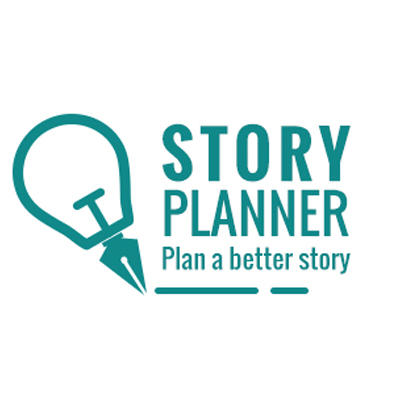There are hundreds of books to help writers plan and structure a story, but many of them do little more than describe the famous three-act formula without inspiring much creativity. I’m going to share my nine favourite novel planning books that offer real help to writers who want to plot a well-structured novel.
Save the Cat
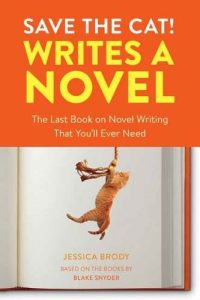
In 2005 Blake Snyder published his Save the Cat method with an easy to understand 15 story beats that ensured every plot had a perfect story rhythm. The book was pitched at screenwriters, but storytelling is storytelling, so this method works perfectly for novels too. It’s a tragedy that Blake Snyder died in 2009 but his method has stood the test of time and is still loved today.
The reason this book is one of my favourites is because Blake Snyder was a brilliant communicator. He describes plot structure in a way that helps people ‘get’ it; and he adds many unique insights into the plotting process that makes sense. He calls the beginning of act two a ‘fun and games’ section, where the ‘promise of the premise’ is fulfilled. This means this section of the story should entertain readers with the world that’s described on the book blurb, or movie log line. His famous ‘Save the Cat moment’ is a plot element that occurs early in act one, when the hero is introduced, it ensures a hero is to be relatable because we see them demonstrate some very human act like saving a cat. Obviously not every hero needs to save an actual feline, but Blake pointed out that all stories need to make us like the central character. Too many stories just assume we’ll care for the hero. Does your novel have an early moment when your hero’s relatable humanity is revealed?
I love the original Save the Cat book, because of Snyder’s humorous writing style, but I also highly recommend Jessica Brody’s Save the Cat! Writes a Novel which perfectly reworks the Save the Cat formula for novelists.
Who should read Save the Cat? These books are great if you’re new to story structure and want a fun and accessible guide to follow.
You can check out the Save the Cat plan at Story Planner here.
The Snowflake Method

I have to be honest, this book is a bit of an acquired taste, it has a cutesy approach that involves Goldilocks and the three Bears discussing story outlining! The reason I forgive this eccentric approach is because Randy Ingermanson’s planning method is so smart. I don’t think anyone who used his method could end up with a badly designed story. The unique idea of the Snowflake Method is that you start very small, defining a novel in just one line, and making sure that is right, and only then then expanding the plot to a paragraph and more. There are ten steps to prepare a novel outline before starting the first draft.
Who should read the Snowflake Method? This book is perfect for an author who wants to try something different. This book offers a complete outlining method that gets to the heart of your story’s strengths.
Check out the Snowflake Method page at Story Planner here.
Take off your pants
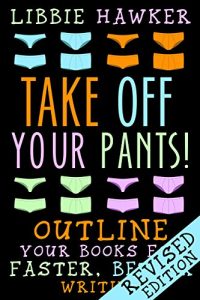
Libbie Hawker’s method is the number 1 story structure method here at Story Planner. It’s easy to see why, because this is such a well-designed approach to planning a novel.
The method puts a well-developed character at the heart of the story plan and guides the writer to plan a story from beginning to end. Take Off Your Pants aims to convert every ‘pantster’ to a planner by using simple instructions that even ‘seat of your pants’ writers can use to formulate a novel outline. Ignore the jokey title, this is a seriously good way to plan a novel.
Who should read Take Off Your Pants? This book is perfect for writers looking for an in depth character-led story structure method.
Try the Take Off Your Pants method at Story Planner here.
The Idea
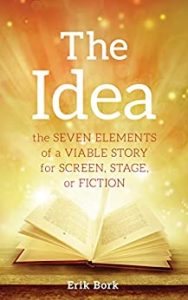
Erik Bork’s book is a little different from the others on this page as it asks writers to take a pause before they embark on writing a novel to consider whether the central idea is strong enough. There is guidance on checking and improving an idea, with Bork highlighting the seven elements of successful story concepts.
Bork says, “Ninety percent of my most important notes or criticisms on a script are concerns I would have voiced about the basic idea if they’d run it past me before writing it.” The compelling suggestion made by this book is that if you do smart work at the idea stage you can yourself difficult work and rewrites down the line. This book helps writers choose and improve their fiction ideas.
Who should read The Idea? This book is perfect for any writer starting a new project and looking to give it the best chance of success.
Check out The Idea here.
Into the Woods
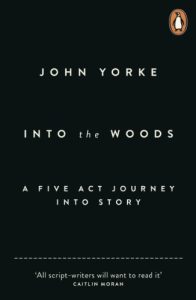
John Yorke’s Into the Woods is a different kind of story structure book; it’s a ‘why do’ book as well as a ‘how to’ book. The book gives useful insights into why stories are shaped the way they are, and helps the reader understand our very human need for stories to help make sense of the world. The book is a good mix of explanation and tips to help writers tell better stories.
Into the Woods offers insights into the building blocks of story, such as protagonists, forces of antagonism, inciting incidents, crises, and climaxes. The reason this book is different is because John Yorke asks why there is a consistent narrative pattern – of thesis, antithesis, synthesis; of flaw, challenge, resolution in every story. He explains that every story medium offers this pattern, whether we are watching a drama, a documentary, or reality TV.
Who should read Into the Woods? This book suits writers who want to go beyond simple instruction and take a deeper look at story.
Check out Into the Woods here.
The Secrets of Story
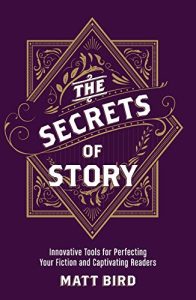
Matt Bird’s Secrets of Story claims it offers ‘innovative tools for perfecting your fiction and captivating readers.’ At the heart of the book there is the ‘Ultimate Story Checklist’ which will highlight story strengths and weaknesses. This means considering questions like whether your character is someone the audience can identify with, whether your story theme creates meaning, and more. This in-depth book explains the concepts that make fiction work for the reader, and outlines how you can harness those concepts in your own writing.
One thing I love about this book is that it asks writers to respect their audiences. It points out that readers are not looking to spend hours of their lives reading your book, their time is valuable and many are looking to stop reading. Looking at story this way helps writers see they need a compelling character and a plot that catches a reader’s attention.
Who should read The Secrets of Story? The Ultimate Story Checklist method suits writers who are self-critical and take their writing seriously.
Check out Secrets of Story here.
Screenwriting Tricks for Authors: Stealing Hollywood

This interesting book by Alexandra Sokoloff is easy to understand and full of useful exercises.
The book takes insights from the world of film to inspire authors to plan a well-crafted story. There are practical guides to plotting methods and workshop style writing assignments to guide story development. There are also plenty of examples from well-known films that help the book’s theory points come alive. This book is great for boosting a writer’s motivation because it asks readers to question their own story preferences. Exercises ask writers to think about their favourite characters, or best endings, to ensure their own work hits a high bar for quality.
Who should read Stealing Hollywood? This book suits writers who want a story structure course in book form, complete with thought-provoking ‘assignments’. If you follow the exercises in this book, you’re bound to create a stronger story.
Check out Screenwriting Tricks for Authors here.
Outlining your Novel: Map Your Way To Success
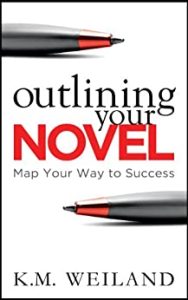
K.M. Weiland is one of the best-known authors of writing books, and she wins my thanks and admiration for the excellent resources she gives away for free on her website. One of my favourites is her hugely useful guide to character arcs.
Outlining your Novel covers characterisation, basic story structure, setting, point of view and more. I like the way the author presents her personal take on the outline process, she allows herself to write a rambling imperfect description of what happens in her story in an ‘extended outline.’ This involves some degree of brainstorming as she plots her novel in a notebook. I’ve seen many writing books that seem to assume story structure pops into everyone’s head by magic! This is a more natural way to go about things, and it’s a method that works for me.
Outlining your Novel is one of my top writing books because it is so short and to the point. If you’re looking for a simple plan to follow to create a plot outline for your book this method will work.
Who should read Outlining your Novel? This book suits writers who want a straightforward guide to planning a novel. It is well worth visiting helpingwritersbecomeauthors.com to get a feel for this author’s planning style.
Check out Outlining Your Novel here.
Story Genius
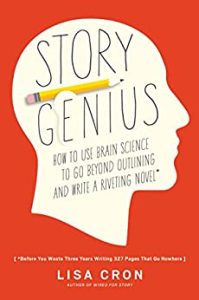
Lisa Cron has written a book that criticises many of the traditional story planning guides for being too shallow. She argues that a story needs to be more than an exciting ‘what if…?’ incident and intriguing plot, it needs to have meaning to the author and reader. She makes a compelling argument, though the book may seem a little preachy to those who are already convinced of this point!
I love the way this book forces any author to look beyond plot and uncover the deeper truth of their story. The book’s method involves uncovering the central character’s ‘third rail’ which is the emotional and thematic point of the book, as well as the character’s goal. Any railway line’s third rail will use its live power to drive a train forward, and a character’s third rail should drive the plot forward to a satisfying ending where your character’s development will be complete. Lisa Cron suggests this third rail should be considered in every single scene of your story.
Who should read Story Genius? This is an advanced technique that suits writers who love to plan as much as they love to write prose. Lisa Cron provides a template for outlining every scene of a novel, as well as exercises to develop how each novel character fits with the hero and influences their ‘third rail’ goal. This planning method does involve more work than many other outlining books, so it might not suit every author. However this is my number one favourite planning book because I’m convinced that putting so much work inro the planning stage will produce a better novel!
Check out Story Genius here.
I hope some of these planning books have inspired you, and don’t forget that Story Planner offers many more planning tools for every stage of the writing process. Why not try the popular Novel Launcher plan? This is a simple 6 step plan to prepping a novel. Check out Novel Launcher here.
